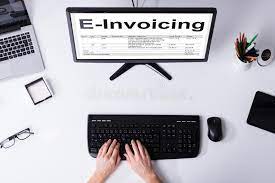Invoicing is a significant part of any organization, whether small or big. Every transaction or expense performed on behalf of the company needs to be taken care of in an official format; that is what invoices are for. Around 15 or so years ago, everything related to invoicing was done manually, including everything from printing the invoices to filling the necessary details by hand. You can imagine how hard that was for employees who needed to maintain invoices, which could be a significant number depending on the company’s size.

However, to solve all that and curb significant problems with the invoicing system, e-invoicing was developed. Many companies tried the system and instantly switched to it; we have this article for those who didn’t. We’ll be discussing important topics related to e-invoices and how they’ll improve your company’s work. Here’s everything there is to know about e-invoicing.
Problems with the conventional system
Before jumping into the basics of the system, we first need to understand why there was a need to create e-invoices in the first place. Invoicing was initially a heavily paper-based process. Everything was done on Paper, and each invoice had to go through different phases of the process while ensuring that it remained intact. The use of Paper creates many problems we don’t need to deal with in this day and age.
Paper costs a lot, and companies with limited expenditure would find it annoying to spend it on such a redundant thing. Secondly, even if we ignore the cost aspect, organizing and working with Paper is very difficult. Finally, as processing on Paper needs to be done manually, there also comes a factor of human error. This resulted in increased costs and processing lifecycles for companies. They needed a solution to deal with all these problems, and that’s where e-invoicing came in.
What is e-invoicing?
Let’s start from the basics. E-invoicing or Electronic invoicing can be termed as the exchange of the invoice document between the supplier and the buyer in an electronic environment. A proper electronic invoicing system should be able to integrate data from the supplier into the buyer’s account payable system. This process should work without the need for the buyer’s AP administration. Many companies have adopted this system in the last five years, and the numbers are only increasing.
As the system was introduced to the industry, many people were confused about what it meant. CTOs with less technical knowledge would think that converting an invoice into PDF or word formats resulted in them adopting the e-invoicing system when that was not true. For an invoice to be electronic, it must be structured and issued through Electronic data interchange (EDI) or standard internet-based web forms. A single invoice costs around 30 euros to process, which is approximately six times the cost it would take to process an electronic invoice.
Why should you adopt e-invoicing?
If you aren’t already convinced that e-invoicing is better than the conventional methods in every way possible, then don’t worry! We got you. You will have the same opinion after reading this section.
Everything is getting digitized. Most companies seek to improve their organizations’ working by automating the processes or adopting a system that makes the operations more cost-efficient. Enhanced visibility into your company’s financial performance also gives many insights so that they can improve their workings. All of this can be achieved by adopting e-invoicing in your company. Here are the benefits that e-invoicing provides:
● Curbing the use of Paper
You don’t need to use paper invoices ever after adopting the system. This will save your company so much time and money that you will instantly see improvement in your AP department’s workings. In addition, your employees will be able to focus on more trivial matters as it would remove the processing invoice part from their workload. Not to mention, you will be doing a favor to the environment by not using Paper.
● Process automation is improved
Generally, processing an invoice is achieved by processing it through 5 different stages. All of these stages are automated when you adopt an e-invoicing system. Not only are they automated, but they also provide an error-free success rate of 99%, which is impossible when humans are part of the system.
Conclusion
Apart from the benefits mentioned above, e-invoices are also good at improving cash management, solving EU directives and other compliance issues, green initiatives, and so much more. This is a system that has everything over the conventional method. The regulations regarding e-invoicing have also been changing in favor of adopting the approach. If your company hasn’t already switched to e-invoices, then now might be the time.





